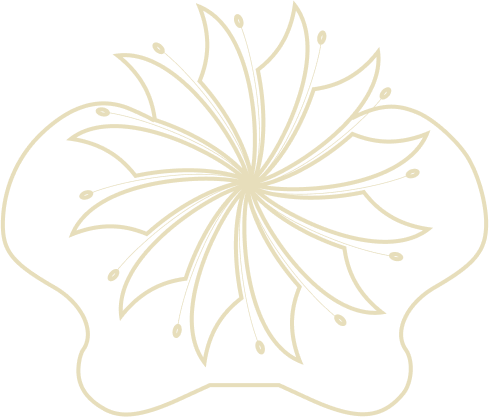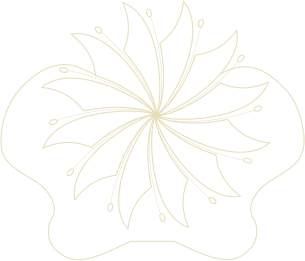What is Internal Pelvic Release Work?
By Fiona Hallinan
A wise bodyworker first shared this work with me over 30 years ago.
The intention of the work was to prepare and soften the vaginal tissues and all the surrounding pelvic structures so the second phase of labour (the pushing phase) would proceed with ease.
The aim was to prevent or minimise trauma to the mother’s birth canal tissues and baby.
Over time, how I share the Internal Pelvic Release Work has changed. How could it not?
My touch skills became more refined. I studied a Dip of Holistic Bodywork to understand the interconnected nature of soft tissues. I learnt from and with the courageous women who came through my door. While drinking tea together, I heard a myriad of stories intertwined with grief, tenderness, frustration, pain, shame, confusion and regret. It pushed me to problem solve and explore different touch approaches with tissues. It pushed me to keep learning and to keep offering my care to those who put their vulnerability on the line.
Today, our movement is growing, and we are proud to pull together women from all medical backgrounds - midwives, chiropractors, osteopaths and beyond, who are coming together with a shared goal to care for women who have experienced any form of trauma, large or small.
We are here to care for women.
Why Internal Pelvic Release Work?
All organs in the body are supported by soft tissue connections. The pelvis being the bony guardian of a woman’s reproductive organs also has a multitude of ligaments, fascia and muscles supporting the bladder, bowel and womb (with her cervix and vagina). The intention of these fibres is to hold the organs in a balanced, suspensory fashion. The capacity of these fibres to accommodate change within the pelvis, most notably pregnancy, is extraordinary.
Soft tissues can hold tension as in any other body area.
Tension can be conscious or unconscious.
Tension can stem from injuries, postural habits, trauma, surgery, hobbies or lifestyle choices.
Tension can restrict movement, flow, expansion, and space of the bones and organs.
Tension in soft tissues can hold memories and emotions. We can hold ‘issues in the tissues’.
During an internal pelvic release session, tension can be identified and invited to release with tender touch, allowing the tissues to sigh.
When tissues sigh, space is created. Comfort is created.
The vagina is a stretchable tube. Its ability to transform is gobsmacking. Women are usually only familiar with vaginal examinations that explore the top wall – as in a cervix check when in labour or for a pap smear. But the vagina has a back wall through which contact can be made with the soft tissue connections that stabilise the bones and organs.
It’s through the back wall of the vagina that we can use tender touch and directed breathing to free tension in the ligaments, muscles, and fascia.
Frequently Asked Questions
-
All organs in the body are supported by soft tissue connections. The pelvis being the bony guardian of a woman’s reproductive organs also has a multitude of ligaments, fascia and muscles supporting the bladder, bowel and womb (with her cervix and vagina). The intention of these fibres is to hold the organs in a balanced, suspensory fashion. The capacity of these fibres to accommodate change within the pelvis, most notably pregnancy, is extraordinary.
Soft tissues can hold tension as in any other body area.
Tension can be conscious or unconscious.
Tension can stem from injuries, postural habits, trauma, surgery, hobbies or lifestyle choices.
Tension can restrict movement, flow, expansion, and space of the bones and organs.
Tension in soft tissues can hold memories and emotions. We can hold ‘issues in the tissues’.
During an internal pelvic release session, tension can be identified and invited to release with tender touch, allowing the tissues to sigh.
When tissues sigh, space is created. Comfort is created.
The vagina is a stretchable tube. Its ability to transform is gobsmacking. Women are usually only familiar with vaginal examinations that explore the top wall – as in a cervix check when in labour or for a pap smear. But the vagina has a back wall through which contact can be made with the soft tissue connections that stabilise the bones and organs.
It’s through the back wall of the vagina that we can use tender touch and directed breathing to free tension in the ligaments, muscles, and fascia.
-
A 2-hour education and hands-on session includes:
A discussion on pelvic anatomy to support a woman’s knowledge of her pelvic space, pelvic bones and pelvic soft tissues.
An exploration and gentle release of tension in the soft tissue connections – ligaments, muscles, fascia – felt through the back wall of the vagina.
Guidance with ‘how to continue with self-care and further release work by the woman or with her partner’s support.
Sharing other modes of releasing tension, e.g., bum jiggling and techniques that cultivate balance within the pelvis and womb.
-
It is always right to have a session in this world of women being poorly educated about their pelvic goods. Until we are educated about the potency of our womb, cervix, vagina and pelvis, we will never claim the power we hold as women.
A session is right for you if you are preparing for birth or are post birth and healing. There is always body preparation or ‘homework’ to do when preparing for one of the most momentous experiences of life – birth. The work supports women in reaching their anatomical potential.
A session is right for you if you are experiencing pelvic pain. Pain leads to tension. Tension leads to more pain. The connective tissues of the pelvis can be invited to soften and support flow and drainage into and out of the pelvic space.
A session is right for you if you have a prolapse or ‘droop’ of your pelvic organs – bladder, bowel, cervix. Pelvic organ prolapse is a massive challenge in a woman’s life, and it affects SO many – those who are fertile, those who are peri menopausal, menopausal and post menopausal.
Pelvic Release Work can help ‘zhuzh’ up the tissues – cervical ligaments and pelvic muscles. It can also support the release of tissue tension that may interfere with proper function.
A session is right for all women!!!
-
It is preferable to have a session when you are not bleeding. Many women feel too vulnerable or tender during the bleeding phase.
However, there are times when sessions go ahead for various reasons when bleeding is light or at the ‘tail end’ of a bleed.
Talk to us about what feels right for you.
-
No preparation is necessary.
Just bring yourself along for care.
-
The release work is gentle but deliberate. The touch pressure will align with your preferences, and your feedback will be continually sort during the session.
The sensations are ‘weird’. We’re not working through skin and hair and fat like external bodywork. We’re working through the generous back wall of the vagina. Some fibres melt and soften with ease; others need more time and holding. Nothing is forced.
-
The Pelvic Space is situated within Fiona’s home at 14 Wright Street, Clifton Hill.
You will see a sign on the front door: “The Pelvic Space”.
There are no parking restrictions on the street.
The Clifton Hill railway is a 700m walk from The Pelvic Space.



